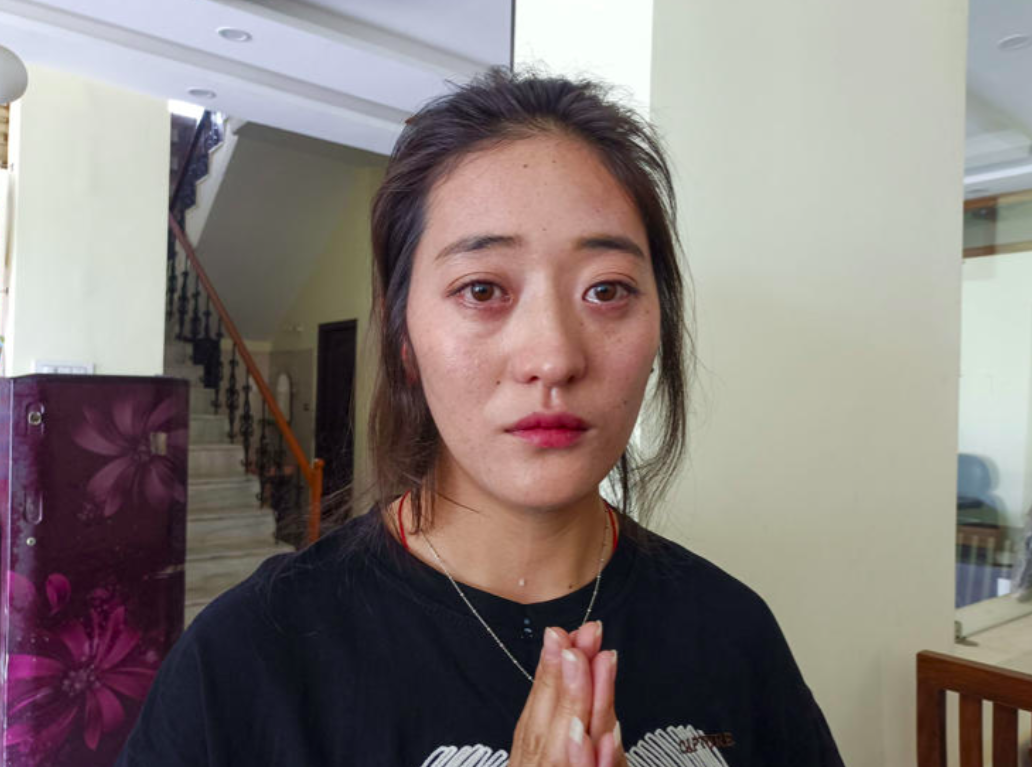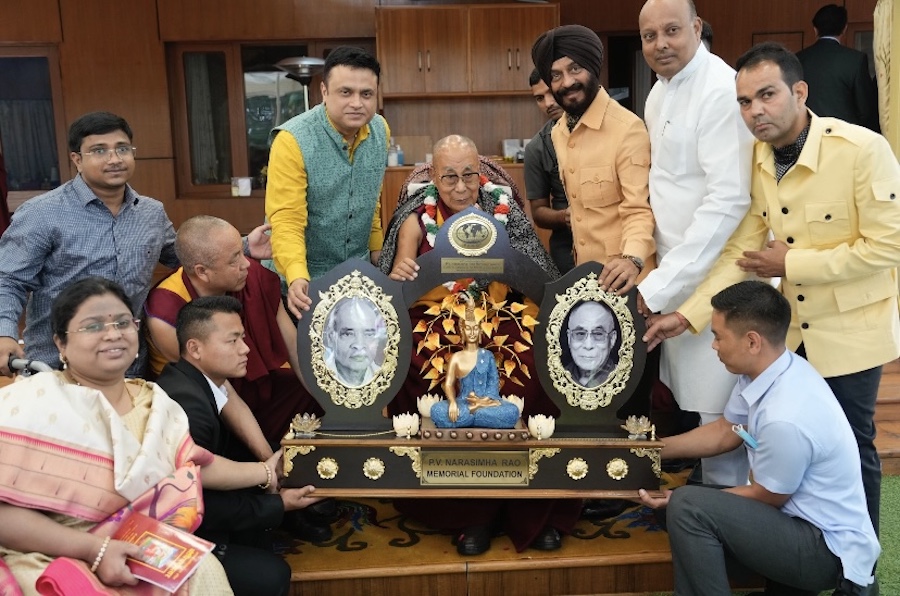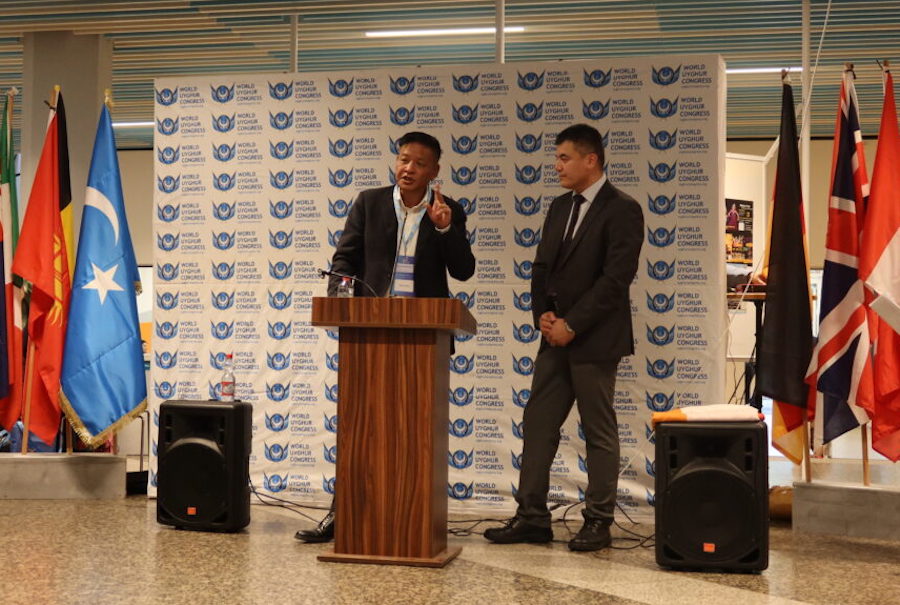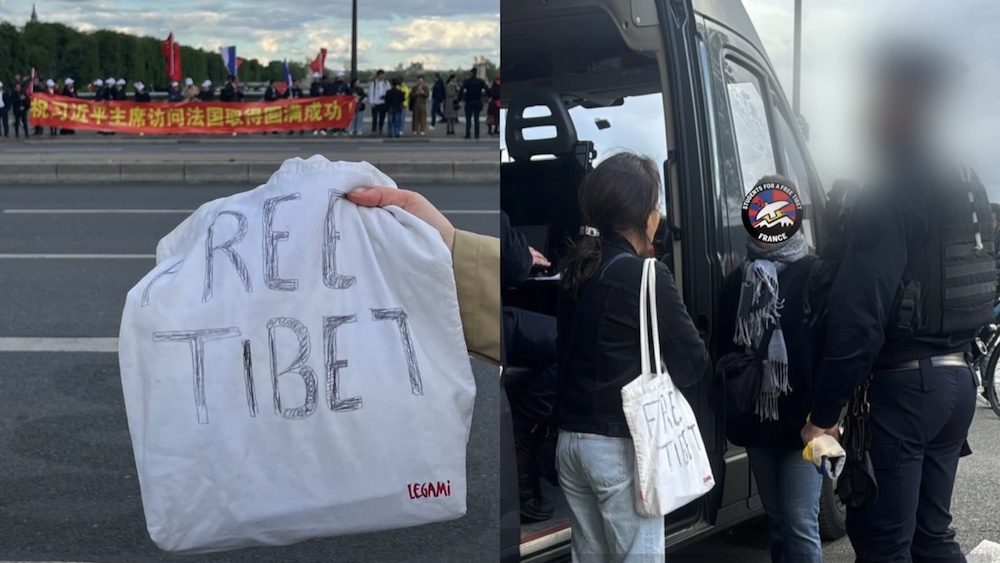By ERIC LINDBERG
Tibet’s political and spiritual leader, the 14th Dalai Lama, brought his message of peace and compassion to the Santa Barbara area yesterday, speaking to thousands of students and community members during two sold-out lectures at UC Santa Barbara.
 In outlining his vision for the path to a peaceful society, the 73-year-old Buddhist monk emphasized the need for a sense of global responsibility and equality.
In outlining his vision for the path to a peaceful society, the 73-year-old Buddhist monk emphasized the need for a sense of global responsibility and equality.
“The concept of ‘we and they’ is no longer relevant,” he said. “We must look at the world as one entity, just we.”
Wearing a traditional monk robe, the Dalai Lama stepped onto the stage at UCSB’s events center to a silent, standing audience of approximately 5,000 people for his afternoon lecture on “Ethics for Our Time.”
After clasping his hands together and bowing, the spiritual leader gestured for the audience to sit, which served more as a cue for thunderous applause.
“Dear brothers and sisters,” he began. “And when I say brothers and sisters, I really feel like that. At this moment, we really need that spirit.”
The world is facing strife in many forms, from global warming to religious conflicts, the Dalai Lama said, describing many of those problems as created by people who are thinking only of themselves.
Too many people are caught up in materialism, he said, the focus on possessions or power.
“We pay much less attention to our internal values, our mind,” he said.
That brought him to the central point of his discussion, what he termed the “universal value.” During any event or encounter in his life the Dalai Lama said he emphasizes the importance of the universal value, compassion, as a source of self-confidence and healing.
“The more self-confidence, less fear, less stress,” he said. “That opens our mind so we can reach out to other people, build a healthy society.”
At the time of his birth — to a farming family in a small town in northeastern Tibet in July 1935 — Nazis were rising to power in Germany. Violent conflicts ensued later in his life in nearby Korea and Vietnam.
As a teenager, the Dalai Lama was called upon to become Tibet’s political leader after China’s invasion of the region. Despite peace talks with Mao Zedong and other Chinese leaders, he was forced to seek exile in northern India after Chinese troops brutally suppressed a nationalist uprising in Tibet’s capital, Lhasa.
“All my life, I witness too much violence and also some violence in the name of revolution,” the Dalai Lama said.
Losing his freedom at 16, then his country at 24 brought a great deal of sadness and heartache, he acknowledged, not to mention the impact of violence taking place across the world.
Money failed to bring him consolation. Pets did not bring him inner peace. Possessions could not give him inner comfort.
“The only thing which brings inner peace is my own inner value, compassion and spirit of forgiveness,” he told the audience.
That is the approach the Dalai Lama hopes world leaders and society in general will start to embrace, rather than violence.
“We have to find long-term methods to change our society, to change our thinking,” he said. “…The only way to tackle or to face this problem is through dialogue. That is the only way.”
In addition to the societal benefits he sees from a life lived with compassion, the Dalai Lama said inner peace has a positive impact on his health.
Last year, while have surgery to remove his gall bladder, the spiritual leader was told by a doctor that he had a young body, one that looks 60 rather than 73.
“That shows my mental peace,” he said.
However, the Dalai Lama shrugged off suggestions that he has healing powers, noting that if he did indeed have those skills, he wouldn’t need gall bladder surgery.
“I’m nothing special,” he told the crowd. “I’m just another human being, just like you. We all have the same potential.”
If people view him as someone special, he explained, they will feel that they can’t follow his experience and live as he does. If they view him as just another person, however, “Then we can communicate and, from my experience, you may get some benefit,” he said.
Yesterday’s visit to UCSB marked the fourth time the 14th Dalai Lama has visited the seaside campus, with previous visits coming in 1984, 1991 and 1997.
It’s also the first visit since the university established a chair of Tibetan Buddhism and cultural studies named after the Dalai Lama. Professor Jose Cabezon, who holds the chair, acted as an official translator for the spiritual leader several decades ago and invited the Dalai Lama to visit.
“Because of his connection to the university and his status as a world figure and exponent of religious tolerance, this visit is extremely important,” Cabezon said.
He is hopeful the lectures and buzz surrounding the event will give local residents more exposure to Tibetan culture in general. A series of lectures on the history of the Dalai Lamas and Tibet, as well as Buddhism, preceded the visit.
An exhibit of sacred Tibetan fabric paintings, known as thangkas, is also on display at the University Art Museum until mid-June, and a group of monks have been creating a sand mandala at the museum in recent days to celebrate the Dalai Lama’s visit.
In addition, the university selected the Dalai Lama’s book, “Ethics for a New Millenium,” as its choice for the UCSB Reads program. Thousands of students, faculty and staff will read the book this winter and spring, as well as hold discussions and campus-wide forums on the concepts it contains.









